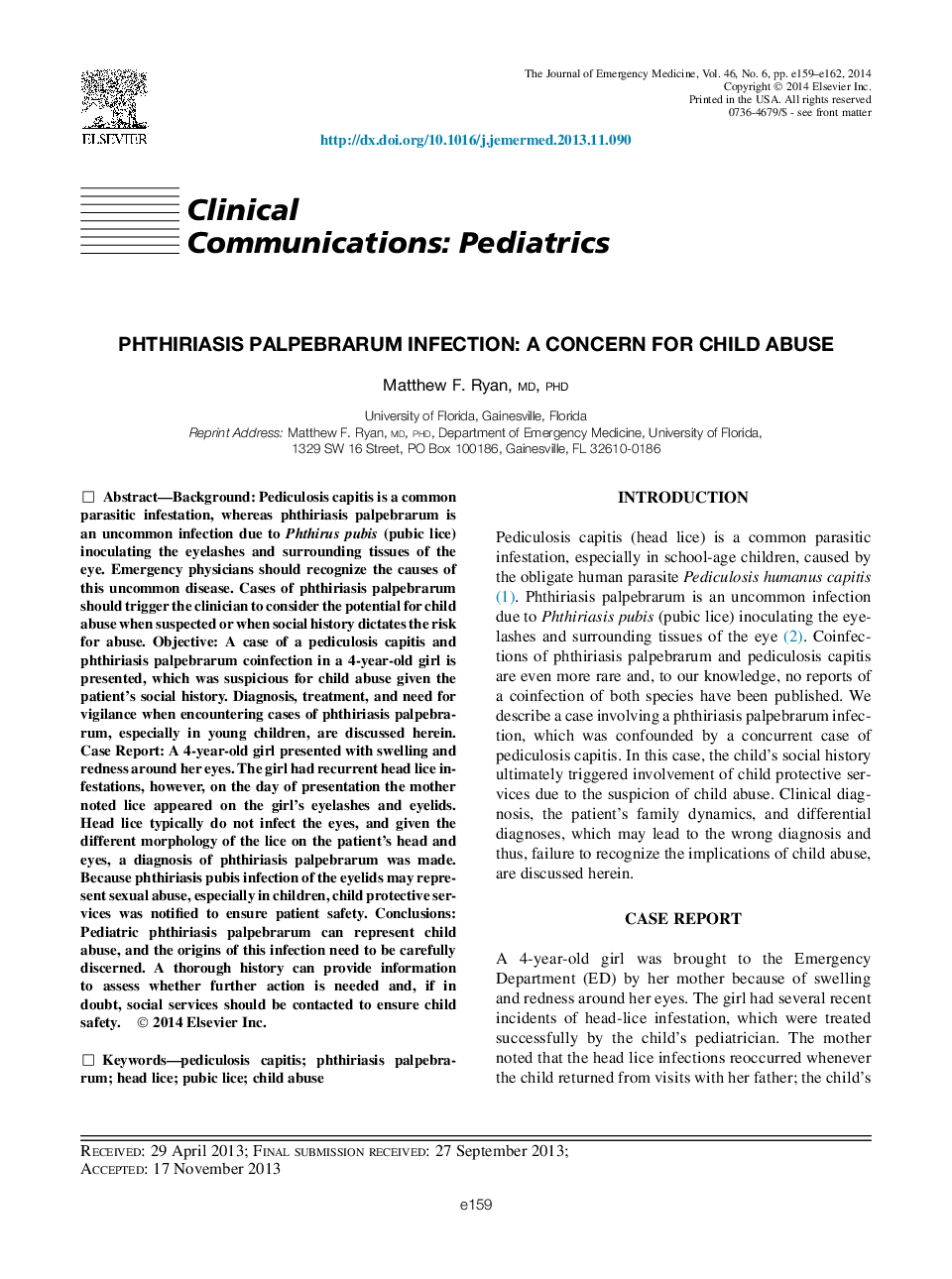| کد مقاله | کد نشریه | سال انتشار | مقاله انگلیسی | نسخه تمام متن |
|---|---|---|---|---|
| 3247230 | 1589136 | 2014 | 4 صفحه PDF | دانلود رایگان |

BackgroundPediculosis capitis is a common parasitic infestation, whereas phthiriasis palpebrarum is an uncommon infection due to Phthirus pubis (pubic lice) inoculating the eyelashes and surrounding tissues of the eye. Emergency physicians should recognize the causes of this uncommon disease. Cases of phthiriasis palpebrarum should trigger the clinician to consider the potential for child abuse when suspected or when social history dictates the risk for abuse.ObjectiveA case of a pediculosis capitis and phthiriasis palpebrarum coinfection in a 4-year-old girl is presented, which was suspicious for child abuse given the patient's social history. Diagnosis, treatment, and need for vigilance when encountering cases of phthiriasis palpebrarum, especially in young children, are discussed herein.Case ReportA 4-year-old girl presented with swelling and redness around her eyes. The girl had recurrent head lice infestations, however, on the day of presentation the mother noted lice appeared on the girl's eyelashes and eyelids. Head lice typically do not infect the eyes, and given the different morphology of the lice on the patient's head and eyes, a diagnosis of phthiriasis palpebrarum was made. Because phthiriasis pubis infection of the eyelids may represent sexual abuse, especially in children, child protective services was notified to ensure patient safety.ConclusionsPediatric phthiriasis palpebrarum can represent child abuse, and the origins of this infection need to be carefully discerned. A thorough history can provide information to assess whether further action is needed and, if in doubt, social services should be contacted to ensure child safety.
Journal: The Journal of Emergency Medicine - Volume 46, Issue 6, June 2014, Pages e159–e162